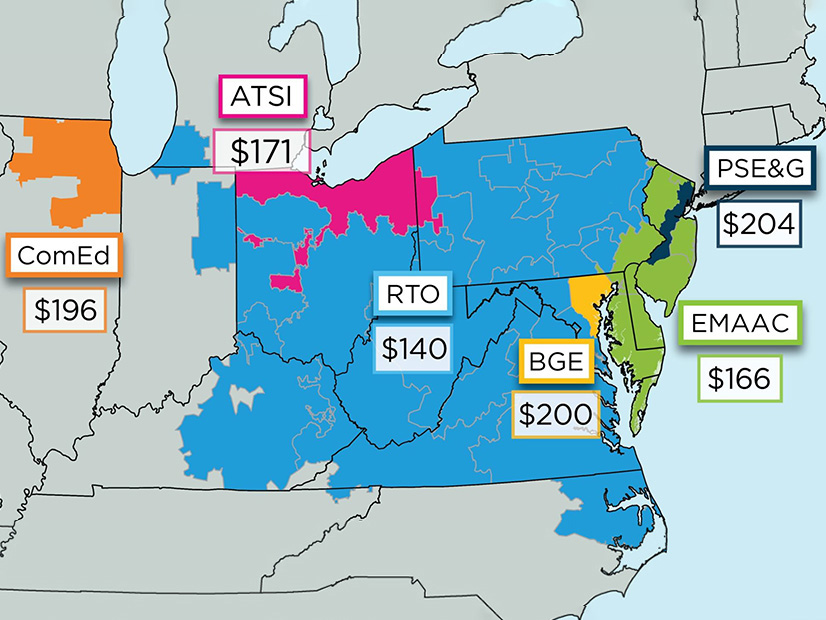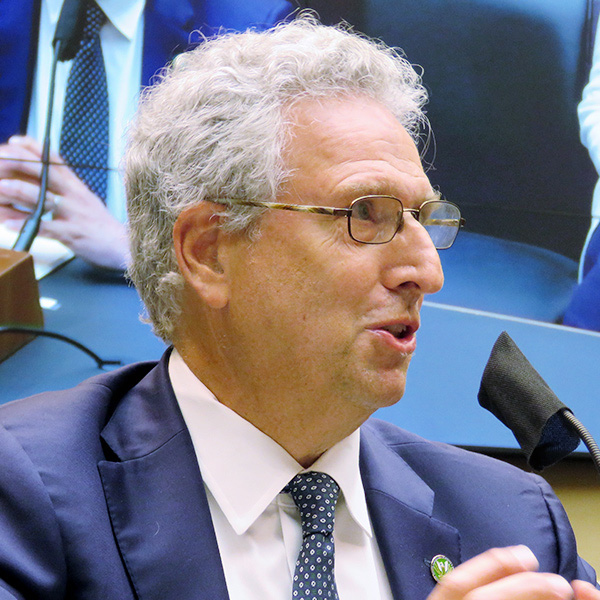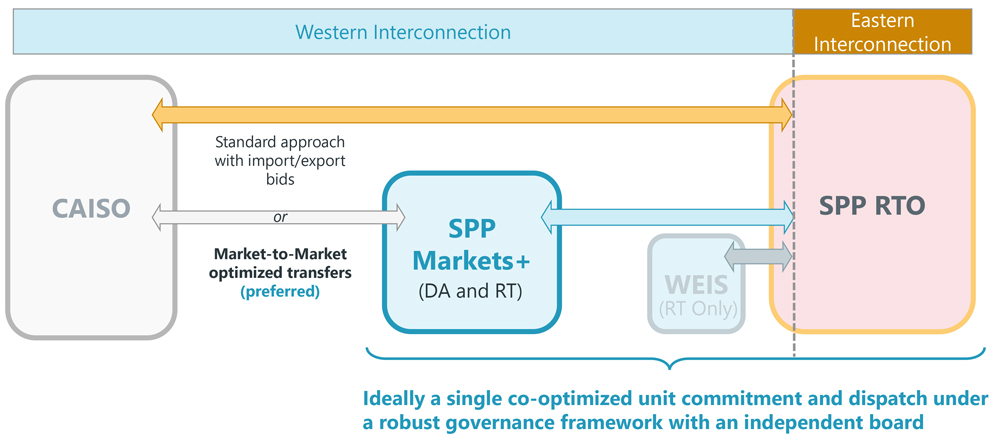While the fate of the Build Back Better (BBB) Act — and its $555 billion in funding for clean energy tax incentives and other programs — was knocked off the front pages toward the end of the year by the resurgence of COVID-19, the bill will likely reclaim some attention this month.
Triggered by Sen. Joe Manchin’s (D-W.Va.) pronouncement Dec. 19 that he would not support the Democrats’ $2 trillion budget reconciliation package in its current form, the holiday cliffhanger had Senate Majority Leader Chuck Schumer (D-N.Y.) declaring a vote on the bill would be held this month. (See Manchin Says ‘No’ on Build Back Better).
But, as reported by POLITICO, Manchin wants the bill to go through a full committee process in the Senate, which could take months. Also, his top priority for a reworked BBB appears to be rolling back the 2017 tax cuts, something that has thus far not been a part of the bill.
BBB has become a political football in a highly politicized midterm election year, with COVID, inflation and ongoing supply chain issues providing significant headwinds. While Manchin is adamant he will not be pressured, Democrats’ determination to get the bill passed with some of its basic energy and social spending initiatives intact could provide the momentum needed to find the necessary compromises.
Still, tough decisions may lie ahead if the bill’s energy provisions have to go through the Senate Energy and Natural Resources Committee, which Manchin chairs. The West Virginian’s oft-repeated view on the U.S. energy transition is that it should be driven by innovation, not elimination, specifically of fossil fuels; hence his strong support for carbon capture, sequestration and storage, advanced nuclear and green hydrogen. He has also opposed increased tax credits for electric vehicles assembled in U.S. factories that have union labor contracts.
A committee process might also give Manchin the opportunity to expand BBB with a bill he and Sen. John Barrasso (R-Wyo.) introduced a few days before his withdrawal of support for the reconciliation package. Under the Fission for the Future Act, the Department of Energy would provide funding to site advanced nuclear facilities and infrastructure in communities affected by the closure of fossil fuel plants.
The importance of BBB to President Biden’s political agenda cannot be overstated: The energy funding is critical if the U.S. is to achieve a 100% clean grid by 2035 and a net-zero economy by 2050. These targets, set by Biden in the first days of his term, are themselves essential to U.S. leadership in global efforts to limit climate change to 1.5 degrees Celsius, as reaffirmed at the 26th U.N. Climate Conference of the Parties in Glasgow in November.
The Transition on the Ground
At the same time, a narrow focus on BBB obscures a broader view of U.S. progress toward a decarbonized grid and economy. Beyond what Biden has been able to accomplish — from his executive orders to the signing of the bipartisan Infrastructure Investment and Jobs Act (IIJA) — the transition at the ground level continues to be driven by the ambitious commitments and innovative programs of cities, states, utilities and corporations.
For example, a staunchly Republican legislature in North Carolina this year passed a law committing the state to reducing carbon emissions by 70% by 2030 and setting equally aggressive targets for adding 2,660 MW of renewable energy to the state’s grid.
Google pushed beyond an initial goal of running its operations on 100% clean energy to a new 2030 target of 24/7 clean power, matching its demand hour for hour with carbon-free electricity. In September, it joined the U.N. and other organizations in launching a global initiative of local governments, utilities and corporations committed to the 24/7 goal.
The spread of clean energy will continue to accelerate in 2022, as long as prices drop and efficiency and innovation improve. The key questions now revolve around how fast the transition can be accomplished and who will benefit.
The U.S. has seen many technological transitions that, by their very nature, create winners and losers. What differentiates the current transition is the recognition of past and ongoing inequalities — jobs lost and communities affected — and the corresponding efforts to provide targeted support, retraining and opportunities for new economic development.
Like BBB, 2022 could be a pivotal point for gauging how fast and how equitable the transition will be. State and local efforts will bear close watching, as will corporate and regulatory actions. But federal leadership will continue to be a vital catalyst.
The DOE Factor
Outside of BBB, Biden’s top catalyst for advancing the U.S. transition to clean energy is DOE. The past year saw a stream of new program announcements and funding opportunities, which will undoubtedly continue in 2022.
For example, even as supply chain delays have raised solar hardware costs, DOE has been working on cutting the “soft costs” of local permitting through its release and promotion of SolarAPP+, a platform that standardizes and streamlines the permitting process.
After hitting 127 SolarAPP+ cities in September, Energy Secretary Jennifer Granholm announced a new goal of adding 60 communities to DOE’s SolSmart program, which provides technical assistance to cities to help them further streamline solar planning and permitting.
In the wake of Manchin’s no-go on BBB, Granholm on Dec. 21 launched a new Office of Energy Demonstrations, funded with $20 billion from the IIJA, to support pilots in hydrogen, small modular nuclear and grid-scale storage.
The office could be a springboard for DOE’s Earthshots initiative, which is focused on accelerating innovation and cutting costs for key low- and no-carbon technologies, including green hydrogen, long-duration storage and carbon capture. The Hydrogen Shot, for example, aims to cut the cost of green hydrogen 80%, from $5/kg to $1/kg, in one decade.
A year-end webinar for the DOE team also highlighted the revitalization of the department’s Loan Program Office (LPO) under former cleantech entrepreneur Jigar Shah. According to Sydney Bopp, LPO chief of staff, the office is now processing 66 applications seeking $53 billion in loans and loan guarantees and has another 50 applications in early development.
Prospects cover “critical minerals processing, manufacturing, advanced nuclear, energy storage, carbon capture, hydrogen, sustainable aviation fuels, EV charging infrastructure, advanced geothermal, hydropower, offshore wind transmission and virtual power plants,” Bopp said.
Granholm hinted at “some exciting news coming out of LPO early next year.”
The secretary has also been a tireless and strategic booster for BBB and the jobs it will create, while helping the U.S. regain its leadership role in global energy markets. One of Granholm’s constant themes is the $23 trillion global market the energy transition is going to create and the imperative for the U.S. to win back competitive leadership from China and Europe.
Energy and Transportation
As former governor of Michigan, Granholm is also aware of the need to bring older, traditional industries and their workers into the energy transition; hence her embrace of advanced nuclear, hydrogen and carbon capture. Under her leadership, DOE’s Office of Fossil Energy has been rebranded as the Office of Fossil Energy and Carbon Management.
For some progressives, these technologies — which even conservatives like Barrasso support — are still suspect, but in 2022, they might also provide an initial common ground and point of compromise.
With broad buy-in from automakers and unions, transportation electrification may present similar opportunities; it also heads the list of high-impact technologies getting a boost from federal support in 2022. Cars and trucks account for 29% of all U.S. greenhouse gas emissions, more than any other sector of the economy, according to EPA. The infrastructure package attacks a major obstacle to cutting those figures — making EV charging easy and convenient — with $7.5 billion for deploying 500,000 EV chargers nationwide.
Granholm and Transportation Secretary Pete Buttigieg on Dec. 14 launched the Joint Office of Energy and Transportation, which will develop guidelines and standards for deployment of EV chargers and provide technical assistance for state planning to make the most effective use of the federal funds. The photo op for the announcement had Granholm and Buttigieg charging up a Ford Mustang Mach E at RS Automotive in Takoma Park, Md., a local small business billed as the nation’s first former gas station to replace all its pumps with EV chargers.
The ambitious fuel efficiency standards announced by EPA on Dec. 20 — a fleetwide average of 40 mpg by 2026 — will be another catalyst for near-term growth of vehicle electrification. EPA predicts EVs will account for 17% of light-duty vehicles in the U.S. by 2026, and automakers have said that federal support will be critical for reaching those figures. (See EPA Rules Will Slash Vehicle Emissions, Rev up EV Market by 2026.)
So, even if Manchin nixes the $4,500 union-labor add-on, strong support from the auto industry and labor unions could keep the standard $7,500 federal rebate for EVs in BBB.
Tax Incentives and Supply Chains
The renewable energy industry is similarly tooling up for a major lobbying campaign in the new year to keep BBB’s 10-year extension of the solar investment tax credit and the addition of tax incentives for standalone storage, transmission and cleantech manufacturing.
The industry is also intensely focused on supply chain issues, which are raising prices and could slow market growth in 2022 by as much as 25%, according to the latest solar market report from Wood Mackenzie and the Solar Energy Industries Association.
Storage, and especially long-duration technologies, could be the winners here, providing potential solutions for both reliability and supply chain issues. Released in June, Biden’s executive order addressing the latter includes a list of provisions aimed at building up the country’s mining and processing of critical minerals, like lithium. The need is pressing and strategic as the U.S. is largely dependent on China for lithium processing.
The LPO is ready with $3 billion in loan guarantees “to support efficient end-use energy technologies, such as mining, extraction, processing, recovery or recycling technologies,” according to a White House fact sheet.
The executive order also calls for a cross-agency task force to tackle environmental and permitting issues, a pressing need regularly raised on both sides of the aisle. The infrastructure law gives FERC the authority to designate national transmission corridors and approve projects in these corridors, if necessary, over the objections of state regulators. Transmission advocates and opponents are watching closely to see if and how FERC uses this power.
Amid such supply chain and permitting challenges, long-duration storage could emerge as a core technology allowing U.S. innovation to capture global markets and build out a domestic supply chain less dependent on offshore mining and processing of critical minerals. For example, Eos Energy Enterprises offers zinc-based storage with up to 12 hours of duration. The company works from a retooled Westinghouse factory near Pittsburgh, with most components supplied by vendors located within a three-hour drive of the plant, according to CEO Joe Mastrangelo.
While lithium-ion batteries will remain critical for the automotive industry, long-duration storage technologies with local supply chains are coming into their own, and 2022 could see major advances for the sector. Further support will come from DOE’s Long Duration Storage Shot, which is targeting a 90% decrease in cost for technologies providing 10 or more hours of duration, again within one decade.
Federal Procurement
A final component of federal action worth following this year will be procurement. Biden’s last energy-focused executive order of the year sets up the federal government to lead by example on clean energy, targeting completely decarbonized electricity for government operations by 2030, with 50% of that power matching supply with demand on a 24/7 basis.
Similarly, the executive order calls for all new government light-duty vehicles to be zero-emission by 2027, with the federal fleet following suit in 2035. The federal portfolio includes 300,000 buildings and 600,000 vehicles, which, with or without tax incentives, means a huge bump in demand that will itself energize domestic markets and drive down costs.
Here as elsewhere, Biden has called for a whole-of-government approach, and the order also looks to the federal General Services Administration to start tracking the greenhouse gas emissions of government suppliers. A Buy Clean program will also tackle the “embodied carbon” in essential materials such as concrete and steel.
The ripple effect is potentially huge. Whatever happens in Congress, Biden’s commitment to climate action and clean energy will accelerate the U.S. transition in 2022 and beyond. The clean energy sector has also shown itself to be remarkably resilient to any economic or social obstacles it encounters, from the 2008-2009 recession to COVID to a divided Congress.



